At every antiques fair, starting with TEFAF in Maastricht, visitors can seamlessly explore and enjoy an incredible selection of works in environments that feel like they’ve always belonged there; spaces designed specifically to minimize reading efforts. On the other hand, each gallery faces a challenge that’s hard to solve: presenting itself anew, but without repeating itself; renewing itself while respecting its own nature and that of the works; reforming itself, yet remaining true to itself. The preparation of the stand is a meticulous and delicate process, invisible to the viewer despite the exceptional results often achieved, even on a purely museographic level. That’s why we’ve asked some of the AAI galleries participating in the 2025 edition of TEFAF (the complete list is below) to share their approach to the stand. This includes the strategies and tactics they’ll employ for the most important game of the year, at least in the realm of trade fairs. Here’s what those who were willing or able to take our cue shared with us.
AAI at TEFAF 2025: Altomani & Sons | Antonacci Lapiccirella Fine Art | Antichità Bacarelli | Benappi Fine Art | Berardi Galleria d’Arte | Bottegantica | Brun Fine Art | Luca Burzio | Galerie Canesso | Caretto & Occhinegro | Alessandro Cesati | Alessandra di Castro | Fondantico | ML Fine Arts | Maurizio Nobile Fine Art | Walter Padovani | Piva & C. | Porcini | Robilant+Voena | Salamon & C. | Tornabuoni Art | Galleria Carlo Virgilio & C.
Enzo Savoia (Bottegantica), whose gallery showcases a blend of 19th and 20th century Italian art, aims to offer collectors, experts, and enthusiasts a stand that showcases his passion for historical-bibliographic research and his meticulous attention to the conservation of the works. Savoia continues, ‘This typically involves relying on the expertise of an architect, who, with a curated selection of works, creates a 3D draft. They strive to analyze the diverse chromatic and aesthetic differences, movements and artists, frames and pictorial textures. The goal is to establish a harmonious stand, showcasing the fullest expression of the works’ personality and character, which also reflects the gallery’s essence.’
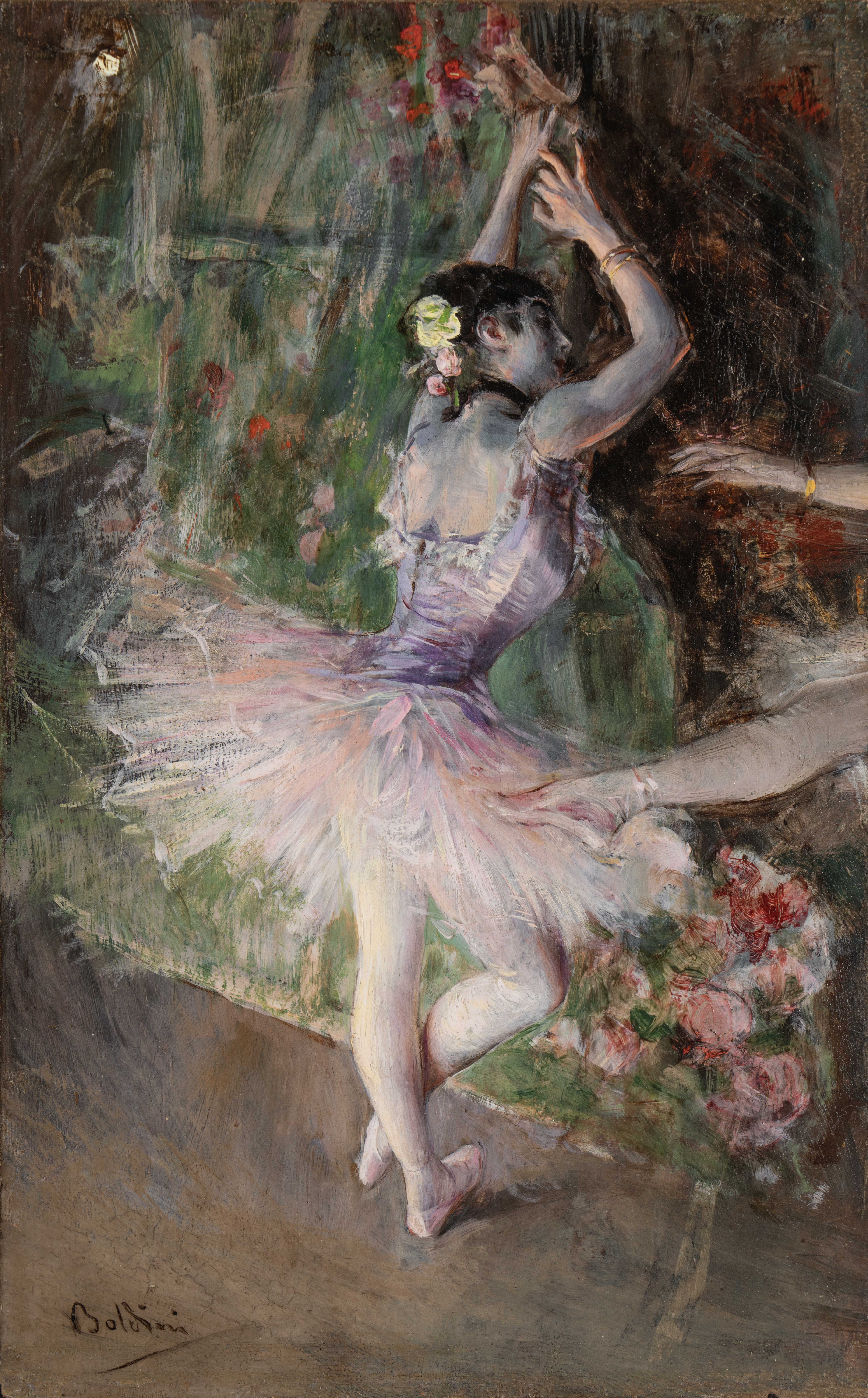
“The Parisian poet praises the effigies as embodying the feminine ideal of women, even going so far as to describe them as ‘femme-fleurs’ with evocative synesthesia.” (Bottegantica).
According to Francesca Antonacci and Damiano Lapiccirella (Antonacci Lapiccirella Fine Art), setting up a stand at an international art fair is much more than just displaying artworks. Rather, it’s a matter of identity, storytelling, and strategy. You need to master the art of guiding the viewer’s gaze towards the most significant works, crafting a path that makes them all enjoyable. These are crucial considerations, as a well-designed stand is not just a showcase, but a space where connections are forged, stories are shared, and relationships are built that extend beyond the fair’s duration. The primary goal is to leave a lasting impression that can translate into sales opportunities.
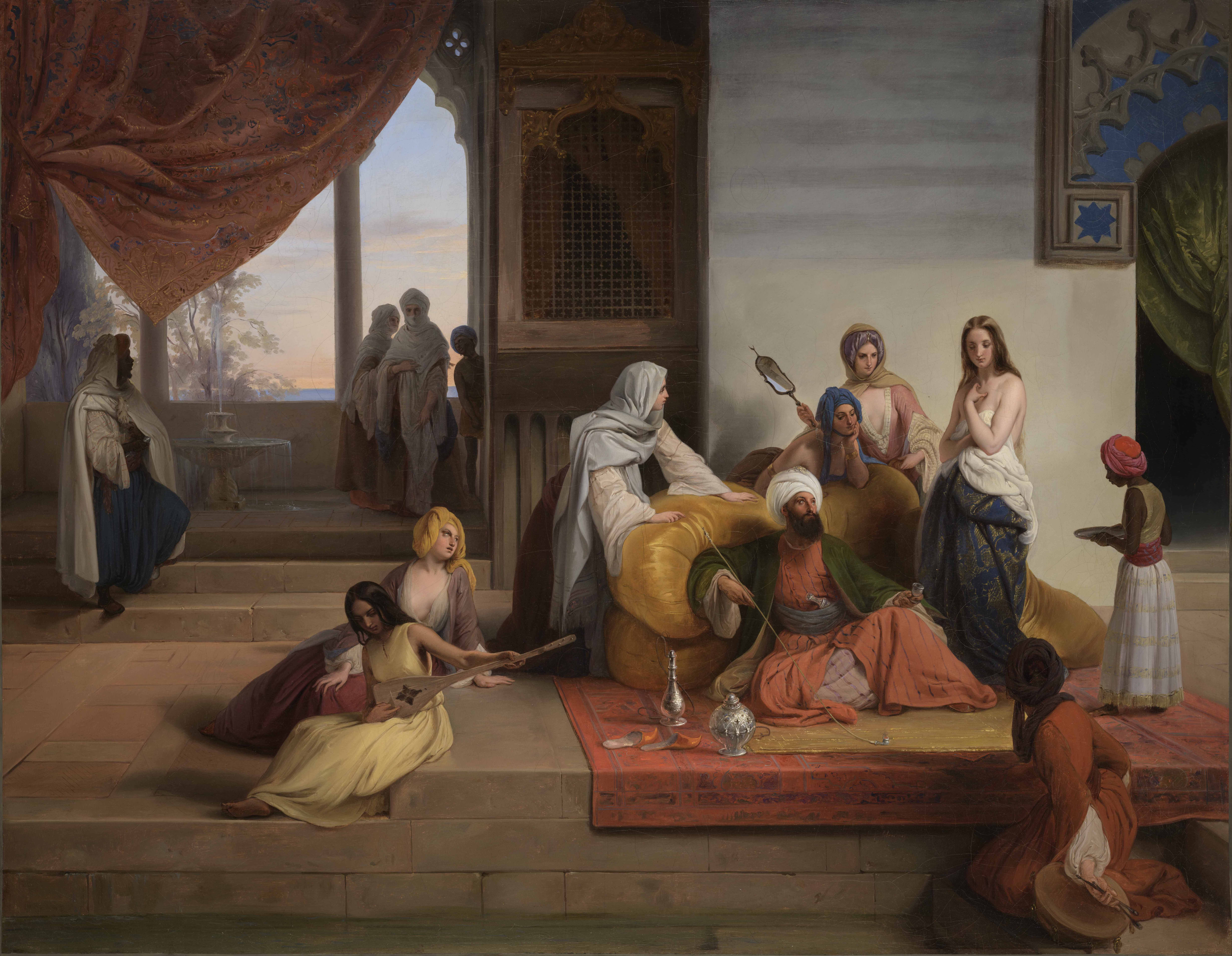
“A previously unseen masterpiece by Francesco Hayez, a significant addition to the artist’s catalog. In this Interior of a harem, Hayez transports us to a world of refined seduction and theatricality.” (Antonacci Lapiccirella Fine Art).
In a fair stand, each work has its own unique requirements. Walter Padovani (WalterPadovani.) reminds us that ‘A good gallerist must understand and respect these needs’. He continues, ‘As I primarily work with sculpture, which involves objects that interact with their surrounding space due to their three-dimensional nature, I strive to leave behind the exhibitor’s perspective and put myself in the visitor’s shoes when designing a stand. What impact will the exhibition have?’ How will the works be perceived as a whole and in their individuality? My strategy is to craft a visual journey that goes beyond mere exhibition, transforming it into a truly immersive experience. The rhythm is punctuated by similarities or contrasts – thematic, stylistic, temporal, or purely aesthetic – that guide the eye and create harmony between the works. At the same time, I create micro-spaces that isolate and enhance the individual sculptures, allowing each one to stand out and emerge with its own unique character. We must recognize that the initial impression can significantly impact the fair’s success. Therefore, in my opinion, clarity, clean lines, and consistency are the essential guiding principles. The works are situated in a contemporary setting, one that is both neutral and impactful. In practical terms, the critical aspect is to effectively illuminate the space, which, lacking natural light, requires meticulous study.
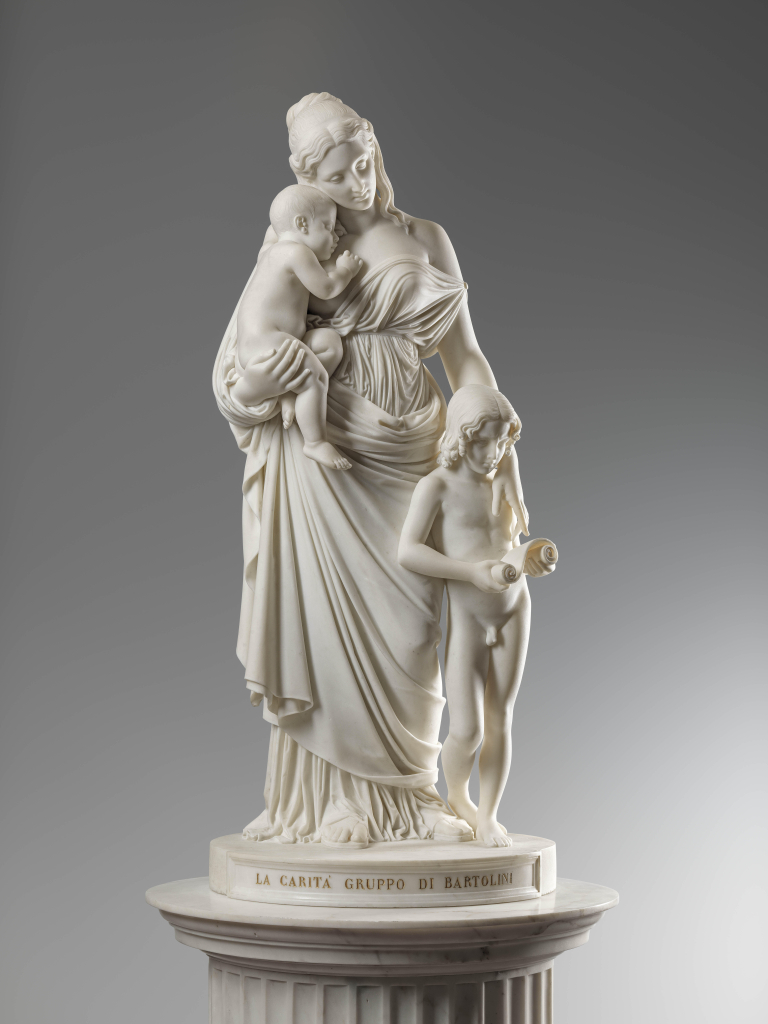
“This year, the play of light will also serve to highlight the smooth, soft marble in Lorenzo Bartolini’s Charity.” (Walter Padovani).
The selection of works can require a lengthy, even extremely long, preparation period; but it is a crucial and necessary condition. Andrea Ciaroni (Altomani & Sons) explains, ‘Our selection is based on the search for works that, beyond their beauty, possess a unique historical and artistic significance. This process can take years of dedication, as we strive to achieve our desired goal. For instance, the Chiaramonte-Bordonaro Caravel, finally discovered after a lifetime of searching, was then showcased in a cutting-edge display case: ‘The sea’s blue hues accentuate the coral’s orange, while a screen print with golden details evokes the explorers’ routes.’ For the occasion, there is no shortage of tailored solutions: ‘A mobile base recreates the movement of the sea,’ rotating the work for a comprehensive view of even the smallest details.
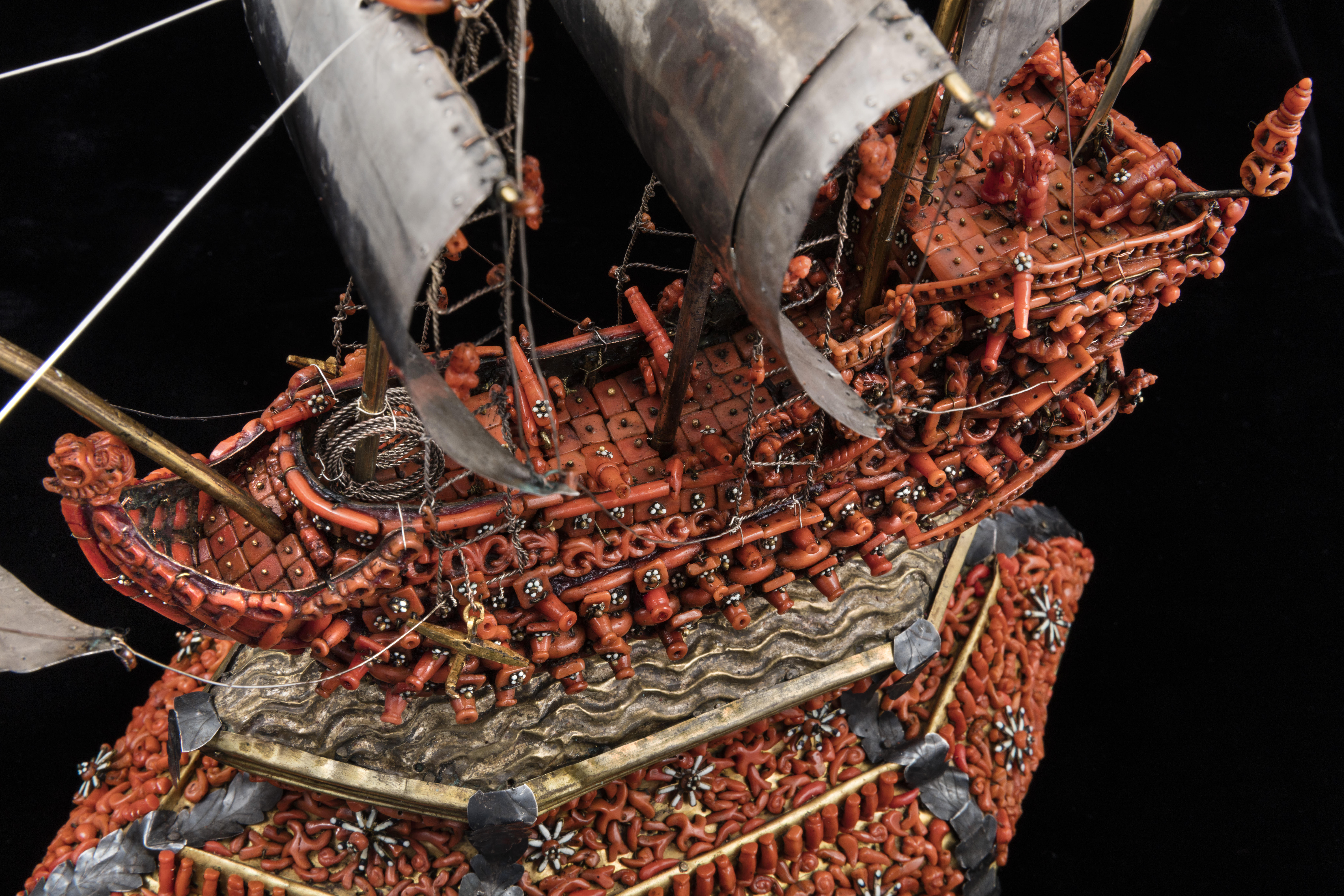
“The Chiaromonte-Bordonaro Caravel was crafted from coral at the end of the seventeenth century by Ippolito Ciotta. This is a truly unique and rare object. My father had longed for it throughout his life, but it wasn’t until the second generation that we were able to finally acquire it.” (A. Ciaroni, Altomani & Sons).
Luca Burzio (Burzio.) emphasizes the importance of avoiding repetition, focusing on innovation ‘to the bitter end, striving to stay ahead of trends, sparing no effort’. This technique is employed for every high-level event, from Masterpiece in London to Brafa in Brussels, and from TEFAF in Maastricht to TEFAF Fall in New York. Collaborating with key partners and collaborations, always under the direction of architect Paolo Genta Ternavasio. For the 2025 edition of TEFAF, Burzio drew inspiration from the Villa Planchart in Caracas, a masterpiece designed by Gio Ponti in 1953. The stand’s polychrome marble floor was crafted in Carrara, specifically for the fair.
Matteo Salamon (Salamon & C.) emphasizes the importance of novelty and self-denial: ‘Exceeding ourselves in every aspect, starting with the meticulous selection of works, their attribution, state of preservation, provenance, and impeccable study. We must then consider the context in which we will exhibit them and, once we believe we have truly surpassed ourselves, we must take a plunge into the ocean of humility and question ourselves once more.’

“This is one of the great ‘Venezie’ paintings that the Maestro created in 1961 for Palazzo Grassi in Venice, and has since been part of the client family’s private collection.” (Salamon & C.).
Gianluca Berardi (Galleria Berardi) believes in crafting magnificent itineraries within a small space, all while maintaining a philological approach. This approach involves creating an immersive and captivating setting that draws visitors in, as if they were on a journey. We’re actively seeking themes to present, which for the 2025 TEFAF edition are A Gateway to the East, dedicated to the East, Dreaming of India, dedicated to Indian iconography and myths, and Italian Secession, for Italian painters who have embraced an innovative approach since the 1910s, in contrast to 19th-century painting.
Tomaso Piva (Piva & C.) emphasizes the need for strategic vision, creativity, and meticulous attention to detail. Every year, we collaborate with our architect to craft not just an exhibition space, but an environment that tells a story and captivates visitors. The initial step is selecting the works. The real challenge for us is to connect works of different nature – furniture, paintings, sculptures, and art objects – to create a story that guides the visitor through every detail, sparking curiosity and wonder. It’s crucial that the space is well-structured, allowing us to guide the public in appreciating both the grandest and most intricate works.
In theory, everything always goes smoothly. Tut in practice, the real obstacles emerge when you’re installing. Matteo Lampertico (ML Fine Art) explains, ‘Often, the hypotheses put forward on paper don’t match reality; the combinations we design don’t always work. Paintings are like people. They have their own unique personality, requiring ample space around them, and, most importantly, they each have their own unique quirks and preferences. That’s why combinations are always a delicate matter. Sometimes they bring out the best in individual works, while other times they clash. The key lies in listening to the voice of each individual work, without forcing any combinations. According to Lampertico, sometimes it’s necessary to forgo exhibiting a work if it doesn’t find a suitable position, even if that means losing a potential sale.
As those who frequent antique art fairs know, the theme of space is crucial for Maurizio Canesso’s (Galerie Canesso) stands. For the gallery owner, it’s crucial to give each work the necessary space, seeking a perfect balance between fullness and emptiness, and avoiding the risk of unwanted distractions. However, beyond expectations and choreography, Canesso believes in the importance of keeping pace. What matters most is ‘having the right customers present at the right time’.
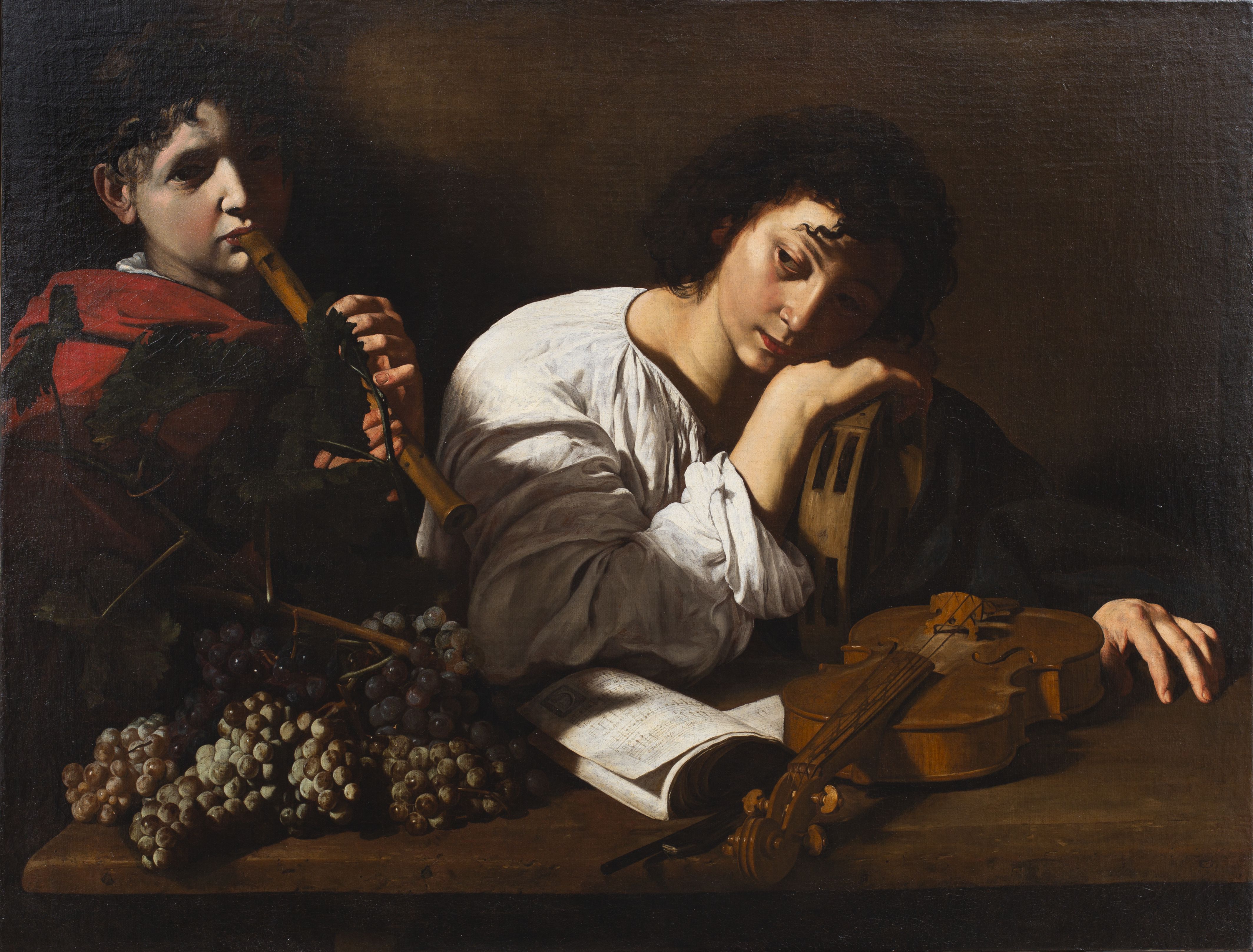
“Gianni Papi, renowned art critic, has deemed our version of this subject to be the most ‘intimately Caravaggesque’ due to its adherence to a ‘more fragrant and clear naturalism.” (Galerie Canesso).
Has it always been this way? Riccardo Bacarelli (Antichità Bacarelli) has captured essential insights from the market’s slow evolution, and warns us about the fear of the new century, that is the so called horror pleni: ‘During the last 10 years I have witnessed the evolution of the market and the expectations of collectors and enthusiasts. Shaping environments that showcase the works without overloading the space is the key. A refined and meticulously designed setup is crucial to highlight the quality and uniqueness of each piece. The lighting, layout, and even the materials of the stand itself must harmonize with the works, creating an immersive and unforgettable experience. Expectations are rising: visitors not only seek masterpieces, but also a cohesive narrative that highlights the historical and cultural significance of the selection. Transparency regarding the origins of the selected works and dialogue with experts and curators are crucial factors in building trust with increasingly discerning, informed, and demanding collectors.
In essence, a regular visitor can discern a hidden signature, a gallery brand, and the result of meticulous work in every exhibition, especially at TEFAF, where the comparison is on a global scale. Massimiliano Caretto and Francesco Occhinegro (Caretto & Occhinegro) confirm this: ‘In our opinion, the only sensible strategy is to create stands that reflect the personality of your gallery.’ In the case of TEFAF, the expectations are high, just like the fair’s standards. In their case, the guarantee of Maarten Van Heemskerck is enough, as it encapsulates the distinct flavor of the gallery’s stands: vigor, authority, and exclusivity.
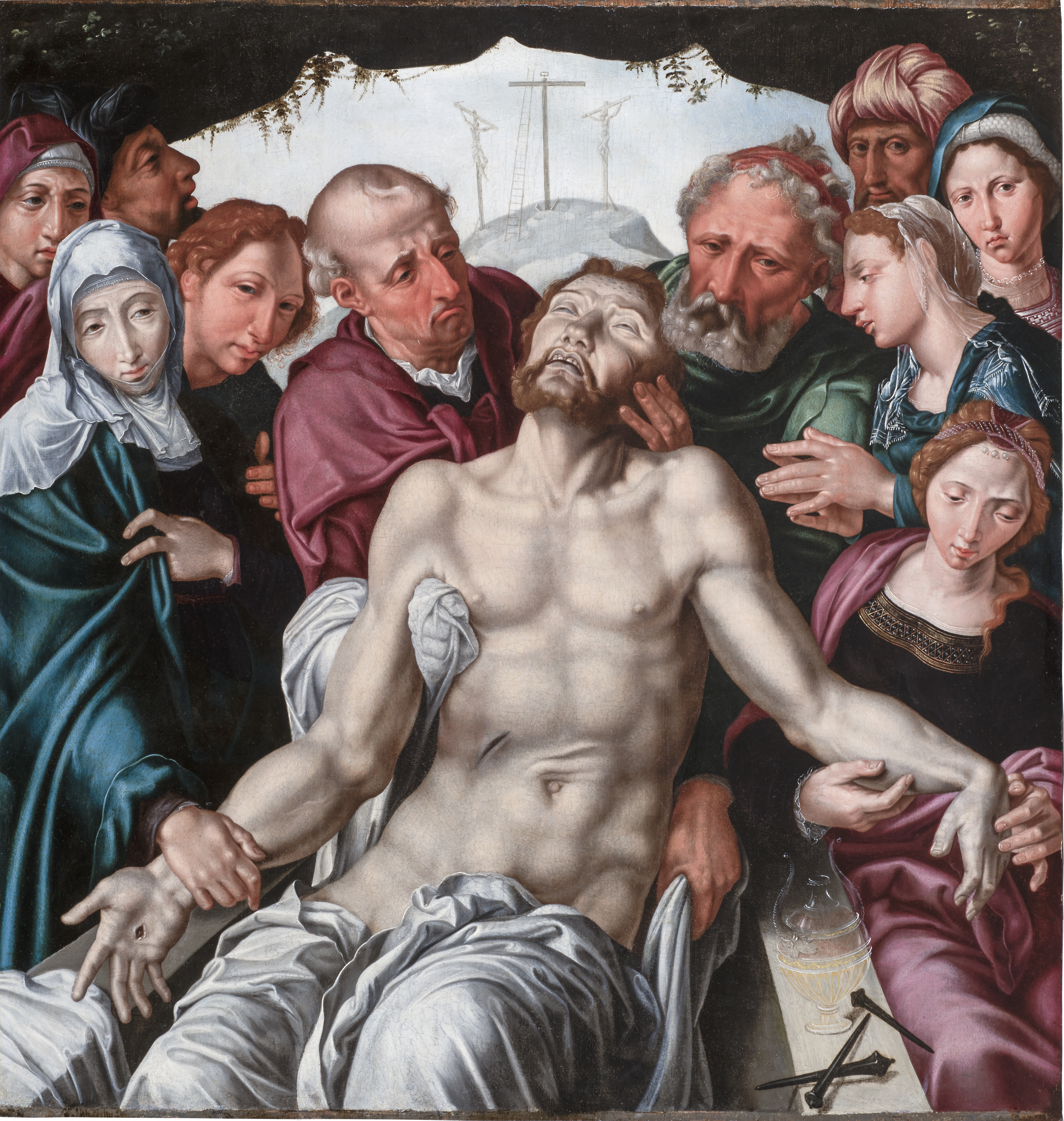
“This monumental panel, once the central part of a triptych whose doors are now preserved at the Worcester Art Museum, is considered one of the most significant examples of van Heemskerck’s work ever to have been on the market. Its state of preservation, ties to classical art, and references to the Italian Renaissance make it a showcase of 16th-century European painting.” (Caretto & Occhinegro).
11 March 2025


